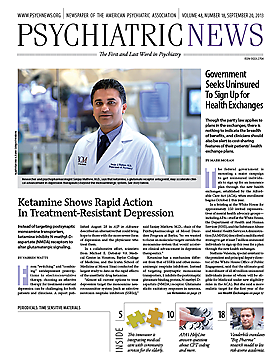In DSM-5, the term “somatoform disorders” is replaced by somatic symptom and related disorders. In DSM-IV-TR there was significant overlap across the somatoform disorders and a lack of clarity about their boundaries. These disorders are primarily seen in medical settings, and nonpsychiatric physicians found the DSM-IV-TR somatoform diagnoses problematic to use. The DSM-5 classification reduces the number of disorders and subcategories to avoid problematic overlap. Diagnoses of somatization disorder, hypochondriasis, pain disorder, and undifferentiated somatoform disorder are removed. DSM-5 now allows for the complexity of the interface between psychiatry and medicine. Individuals with somatic symptoms plus abnormal thoughts, feelings, and behaviors may or may not have a diagnosed medical condition. It is clear from a large body of research that the relationship between somatic symptoms and psychopathology exists along a spectrum, and the arbitrary high symptom count required for DSM-IV-TR somatization disorder did not accommodate this spectrum. Psychological factors affecting other medical conditions and factitious disorder are moved into the somatic symptom disorders chapter because somatic symptoms are predominant in both, and both are most often encountered in medical settings. Criteria for conversion disorder (functional neurologic symptom disorder) are modified to emphasize the essential importance of the neurological examination, and in recognition that relevant psychological factors may not be demonstrable at the time of diagnosis.
1. In DSM-IV-TR a patient with a high level of anxiety about having a disease and many associated somatic symptoms would be given the diagnosis of hypochondriasis. What DSM-5 diagnosis would apply to this patient?
a) hypochondriasisb) illness anxiety disorderc) somatic symptom disorderd) generalized anxiety disordere) somatoform disorder NOS
2. A young woman is hospitalized for evaluation of fits of movement in which she appears to lose consciousness, rock her head from side to side, and move her arms and legs in a nonsynchronous, bicycling pattern. The episodes occur a few times a day and last for 2 to 5 minutes. EEG during the episodes does not reveal any ictal activity. After a fit, her sensorium appears clear. What is the most likely DSM-5 diagnosis?
a) epilepsyb) malingeringc) somatic symptom disorderd) conversion (functional neurological symptom disorder), attack-seizure subtypee) factitious disorder
3. Which of the following is the key feature of factitious disorder in DSM-5?
a) somatic symptomsb) conscious misrepresentation and deception c) external gain associated with illnessd) absence of another medical disorder that may cause the symptomse) normal physical exam and laboratory tests ■
